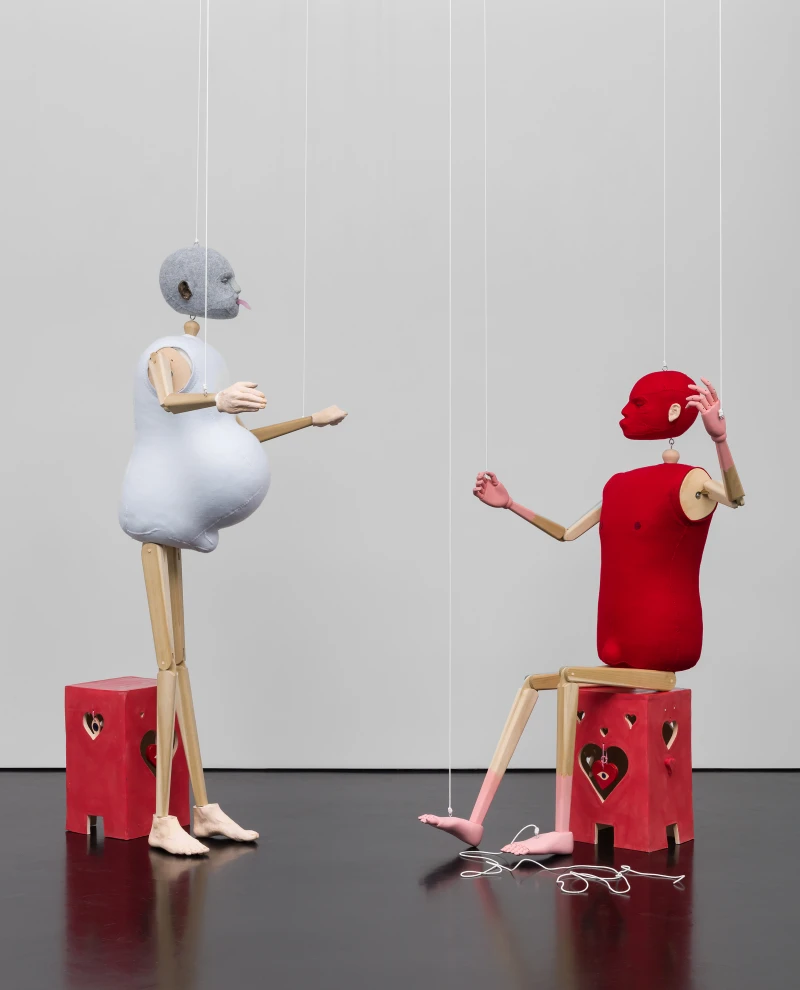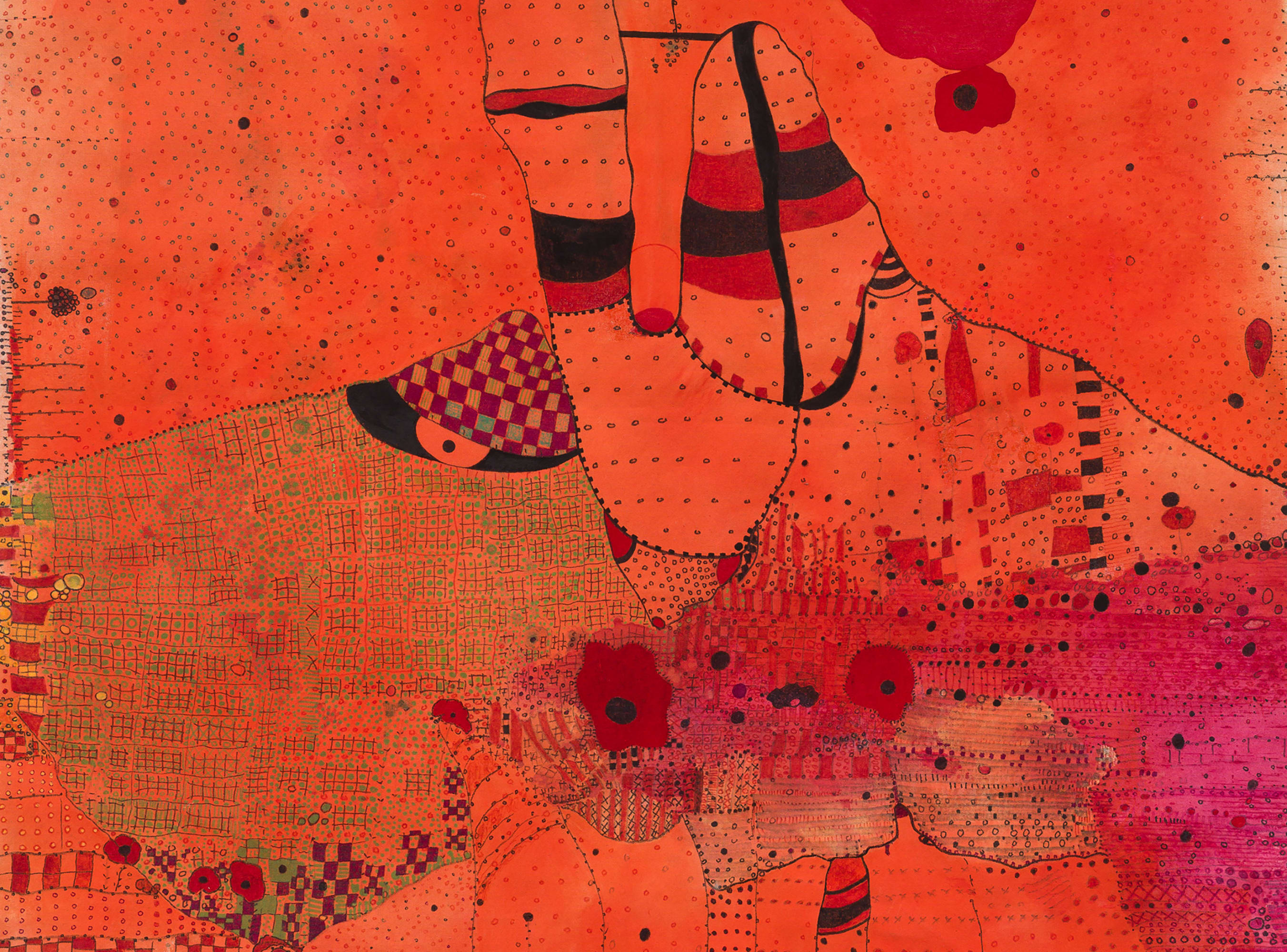
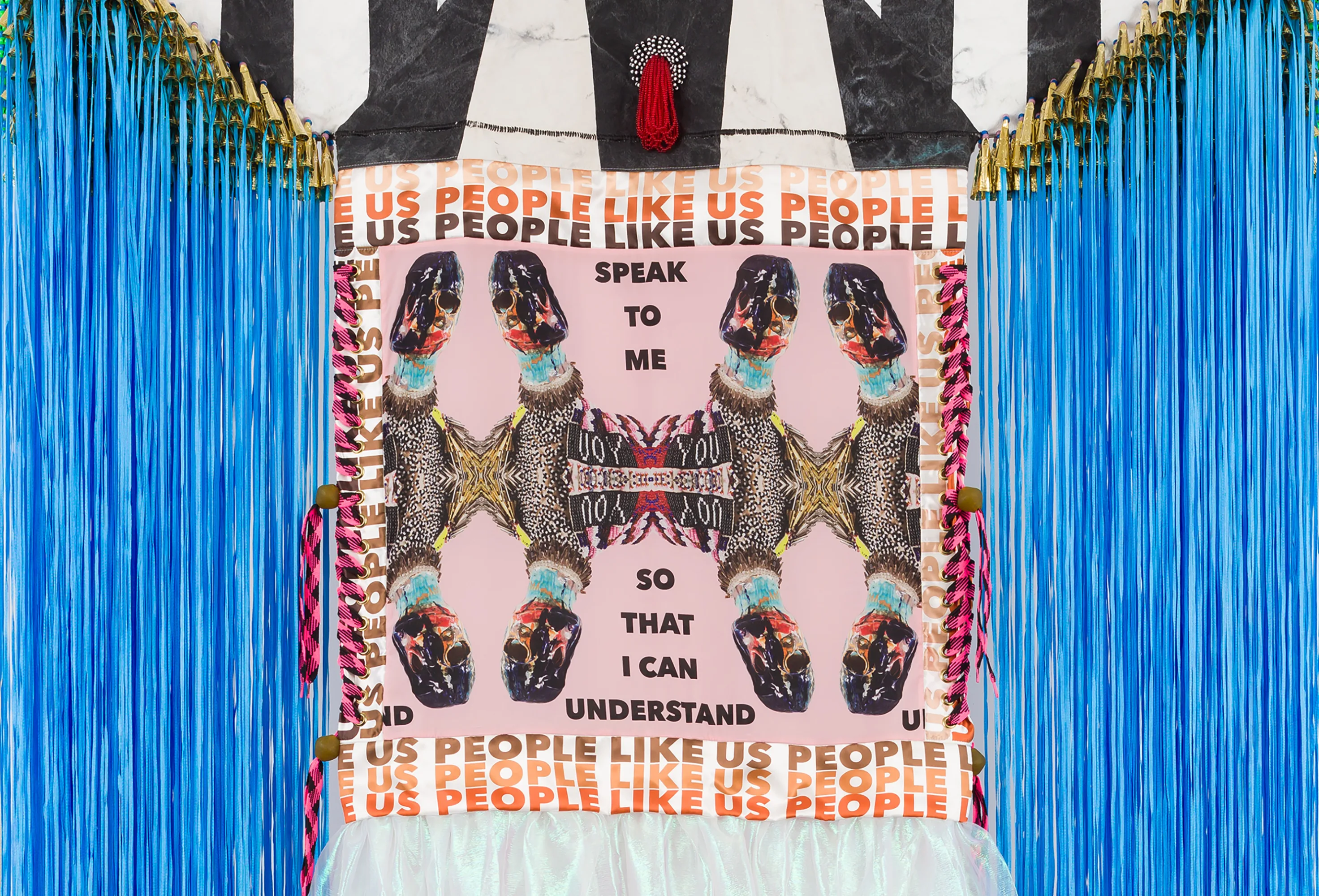

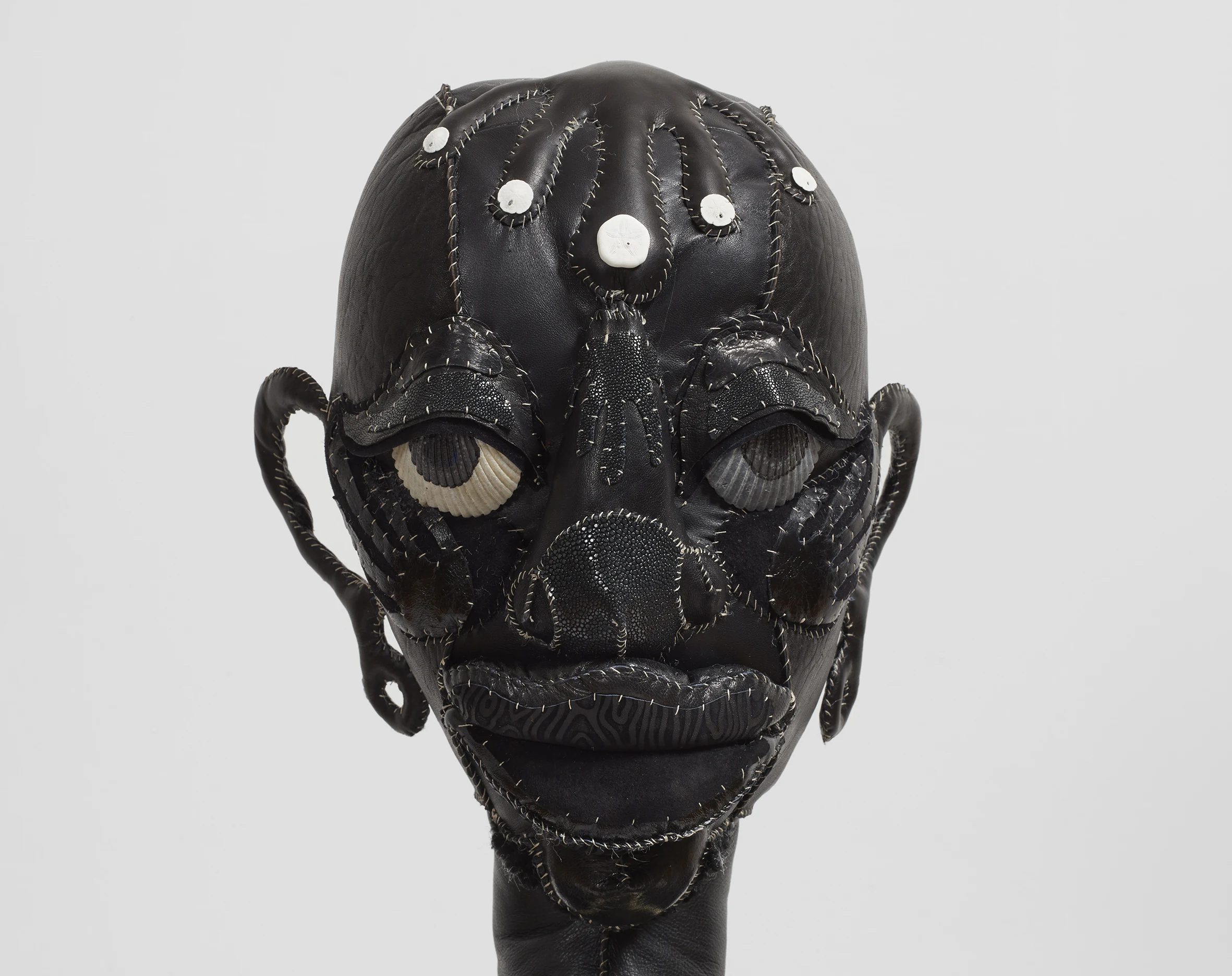
Threadbare
Stephen Friedman Gallery is pleased to present a group exhibition of new and historical works by Jonathan Baldock, Huguette Caland, Jeffrey Gibson and Tau Lewis. Challenging issues such as identity, gender, sexuality and race, the works in ‘Threadbare’ explore the transformative and performative qualities associated with textiles through their inherent connection with the body.

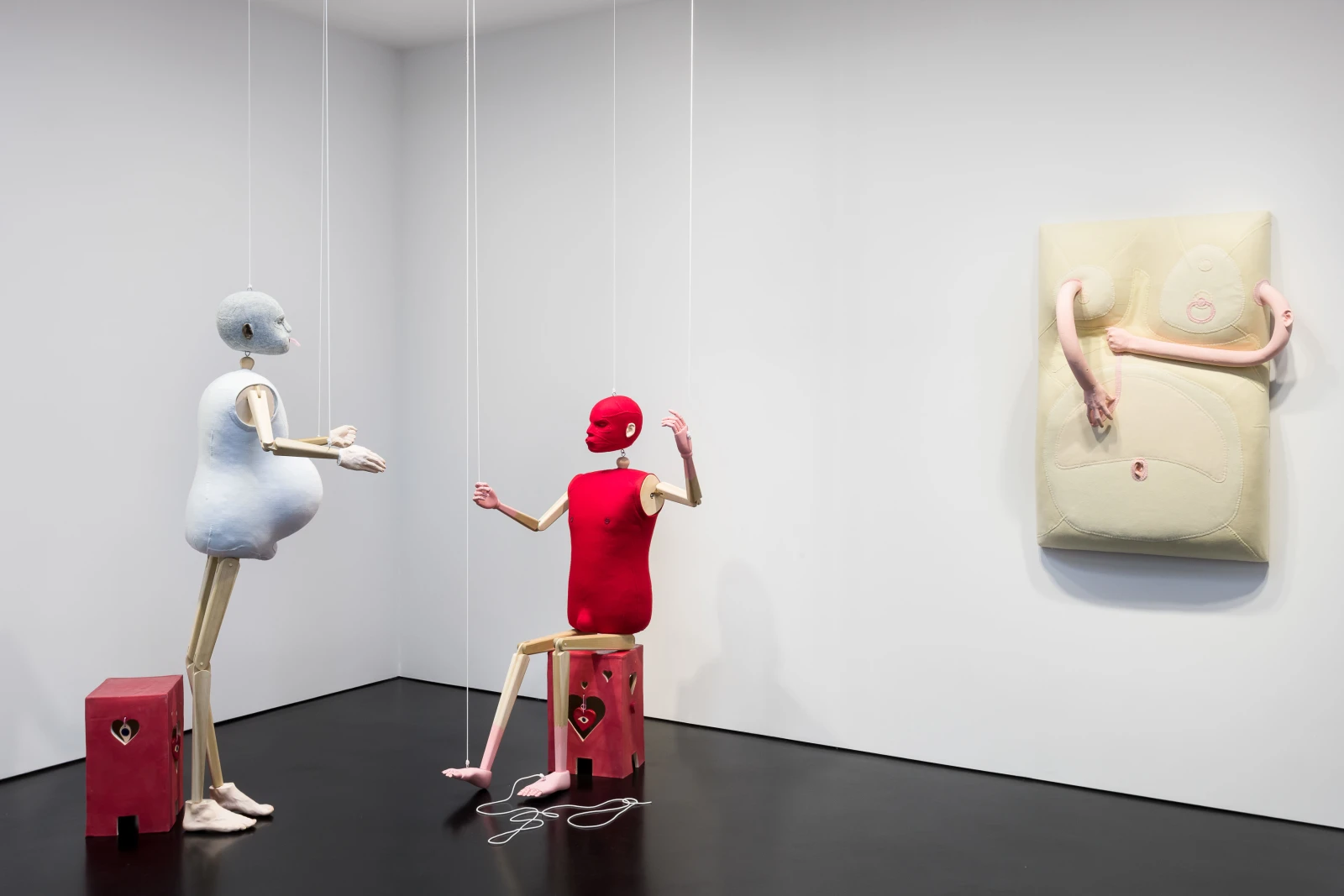
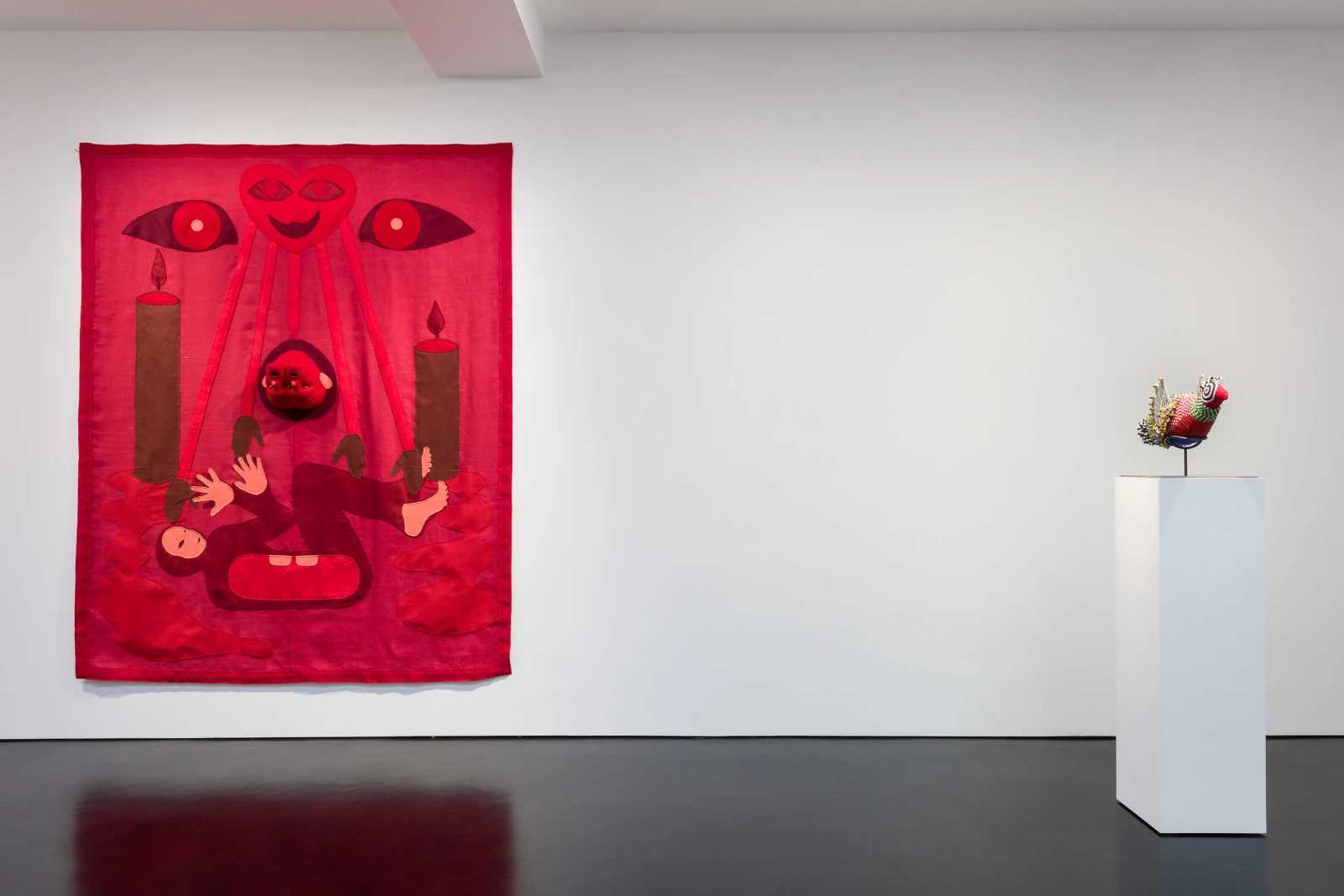
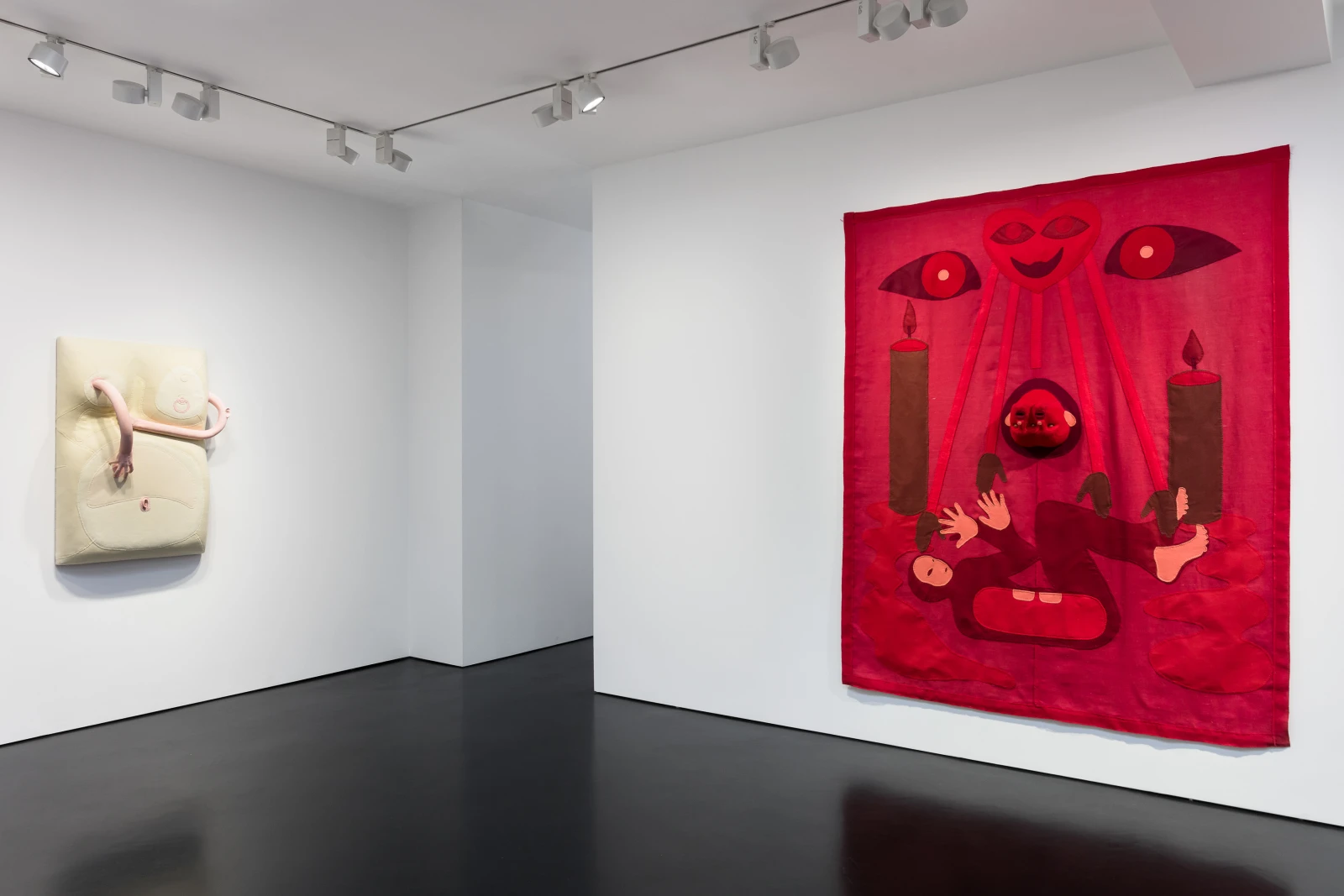

Jonathan Baldock
Jonathan Baldock’s recent work uses puppetry, quilt-making and embroidery to reveal the malleable quality of the human body and its connection with the inner psyche. Baldock believes “in the power of making things through the bringing together of head and hand,” contesting the sentimentality associated with craft and the hand-made. Originally commissioned for his solo exhibition at Kunsthall Stavanger in 2020, ‘Eating feelings (a conversation)’ captures a pair of life-sized marionettes engaged in animated dialogue. Assuming the role of puppet master, Baldock breathes life into inanimate forms by using casts of his own body and arduous physical processes such as hand-embroidery. Seated on ceramic stools, the couple appear frozen in motion with their arms outstretched in wild gesticulation. Chris Bayley observes that Baldock’s “marionettes seem to rebel and resist their innate abilities of what it means to be a puppet, proposing potential for agency from the viewer’s imagination.”

Huguette Caland
Huguette Caland’s exploration of abstraction is underpinned by her use of the human body. Her playful engagement with eroticism is manifested in a series of kaftans the artist made in the 1970s that directly challenge taboos associated with the representation of female sexuality. While living in Beirut in the 1960s, Caland rejected the western-influenced fashions worn by her peers in favour of loose-fitting kaftans inspired by the abaya, a form of traditional Arabic dress. At a time when the emphasis was on being tall and thin, Caland offered a liberating embrace of the female physique for women who did not conform to these societal pressures. In this vein, the dresses on view in ‘Threadbare’ conceal the body, instead drawing attention to abstract embroidery and detailed crochet patterns animated by the wearer’s movement. Dynamism is also explored in Caland’s ‘Rossinante’ series of works on paper that depict amorphous shapes contorting into anthropomorphic poses. Obsessive repetition of lines and dots accentuates this sense of movement. These drawings come to life in an accompanying group of sculptures in which ink is replaced by interlocking areas of thread, paper and wire. Displayed in succession, they seemingly dance across the floor.



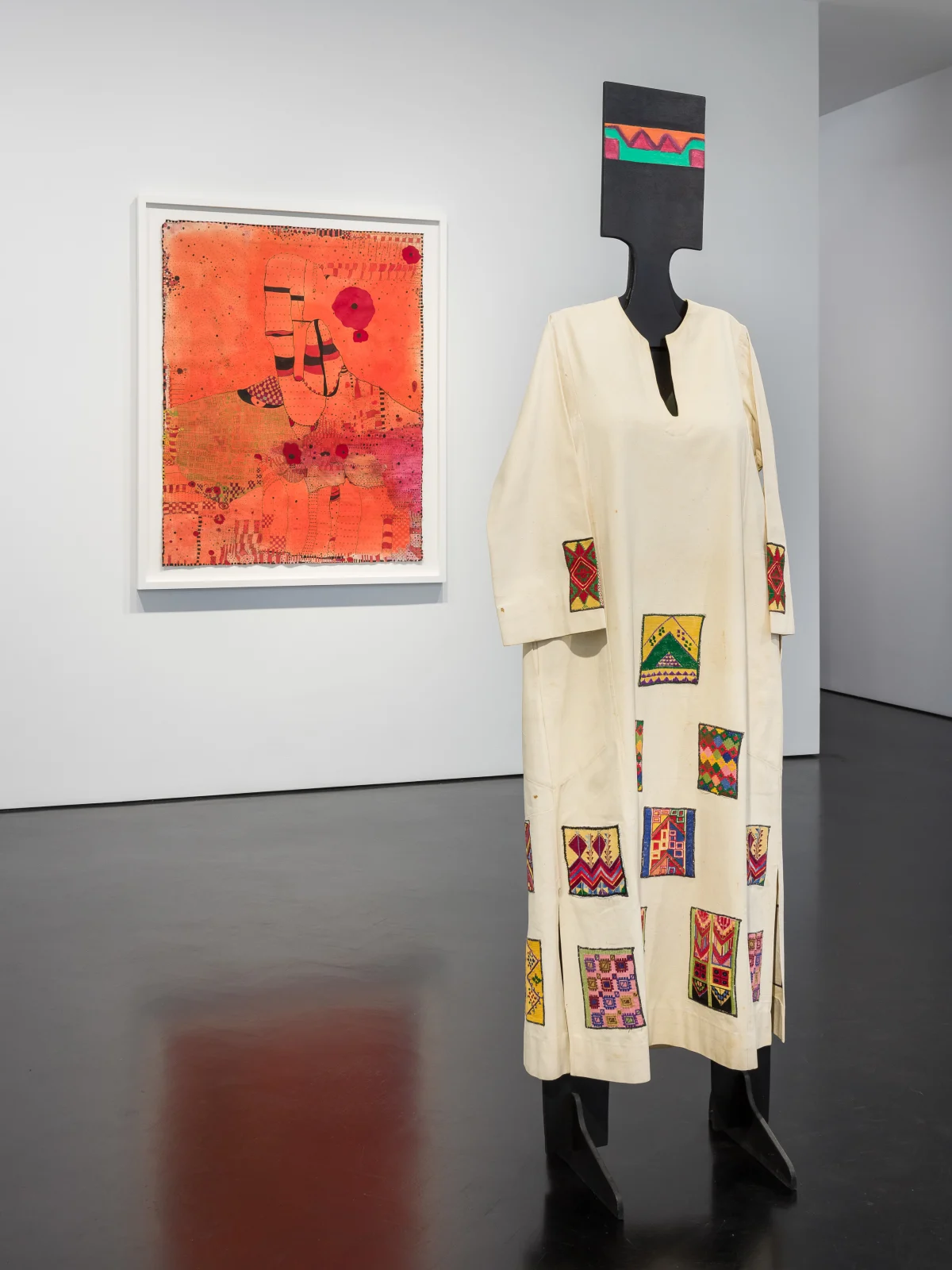

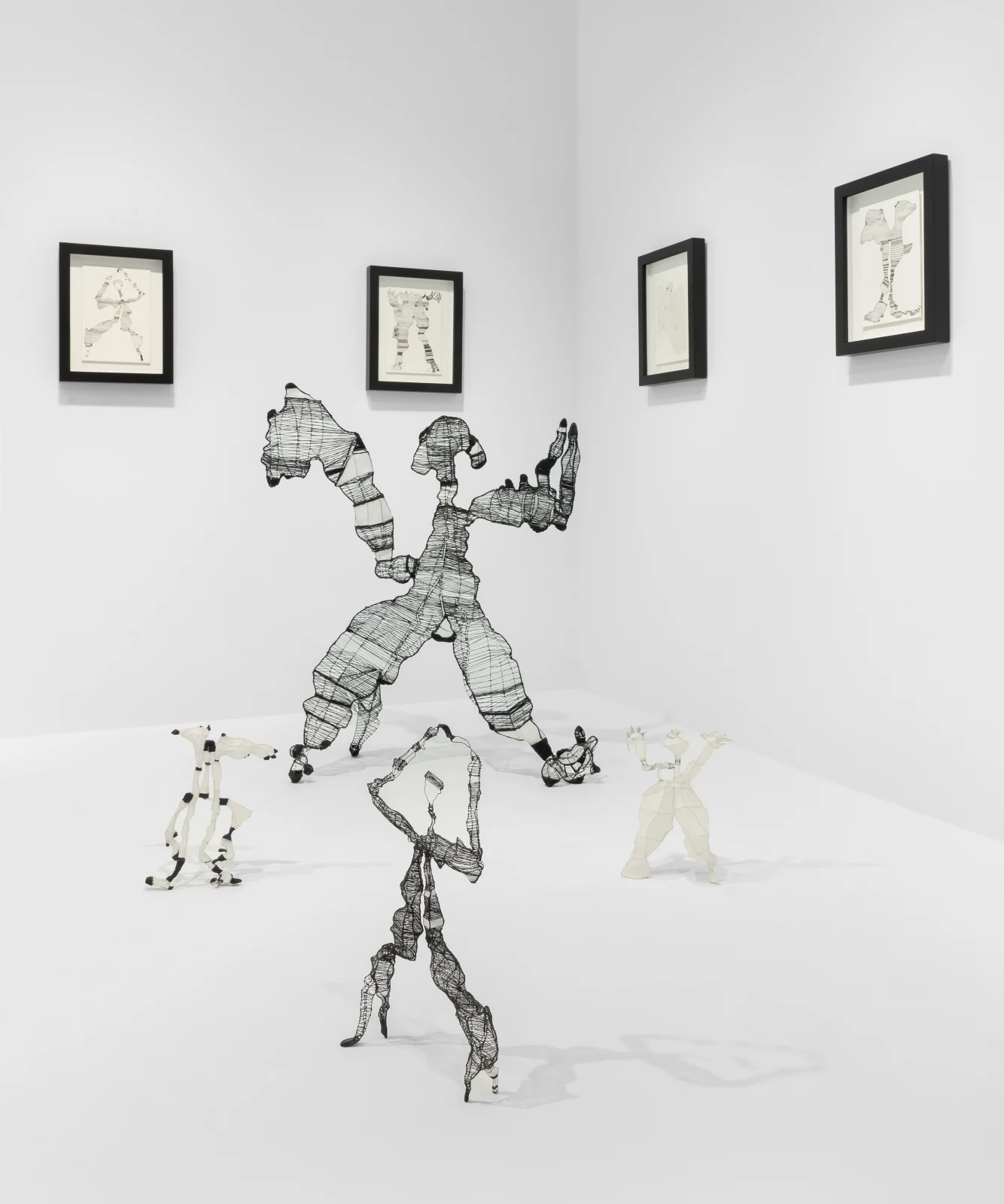
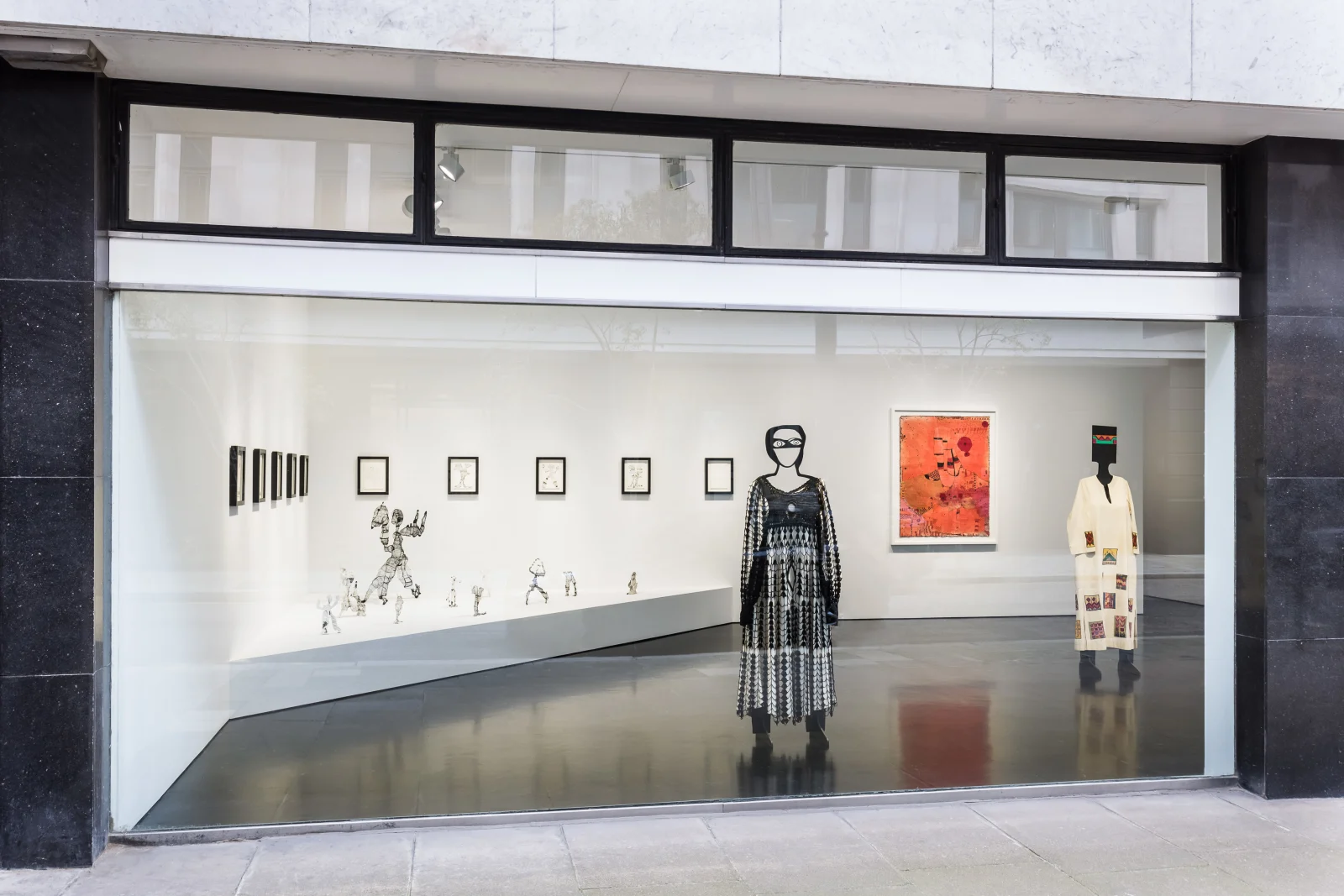
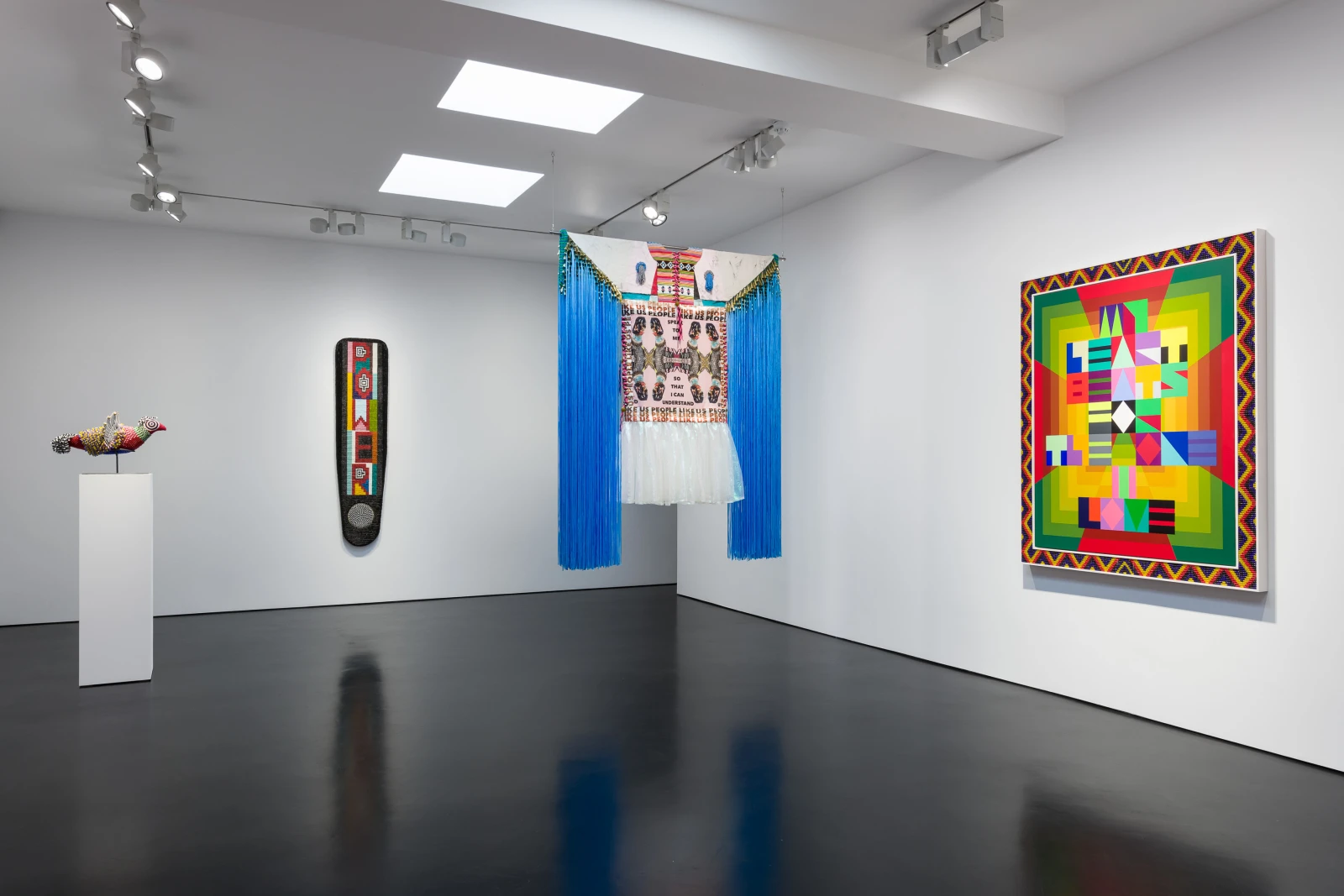


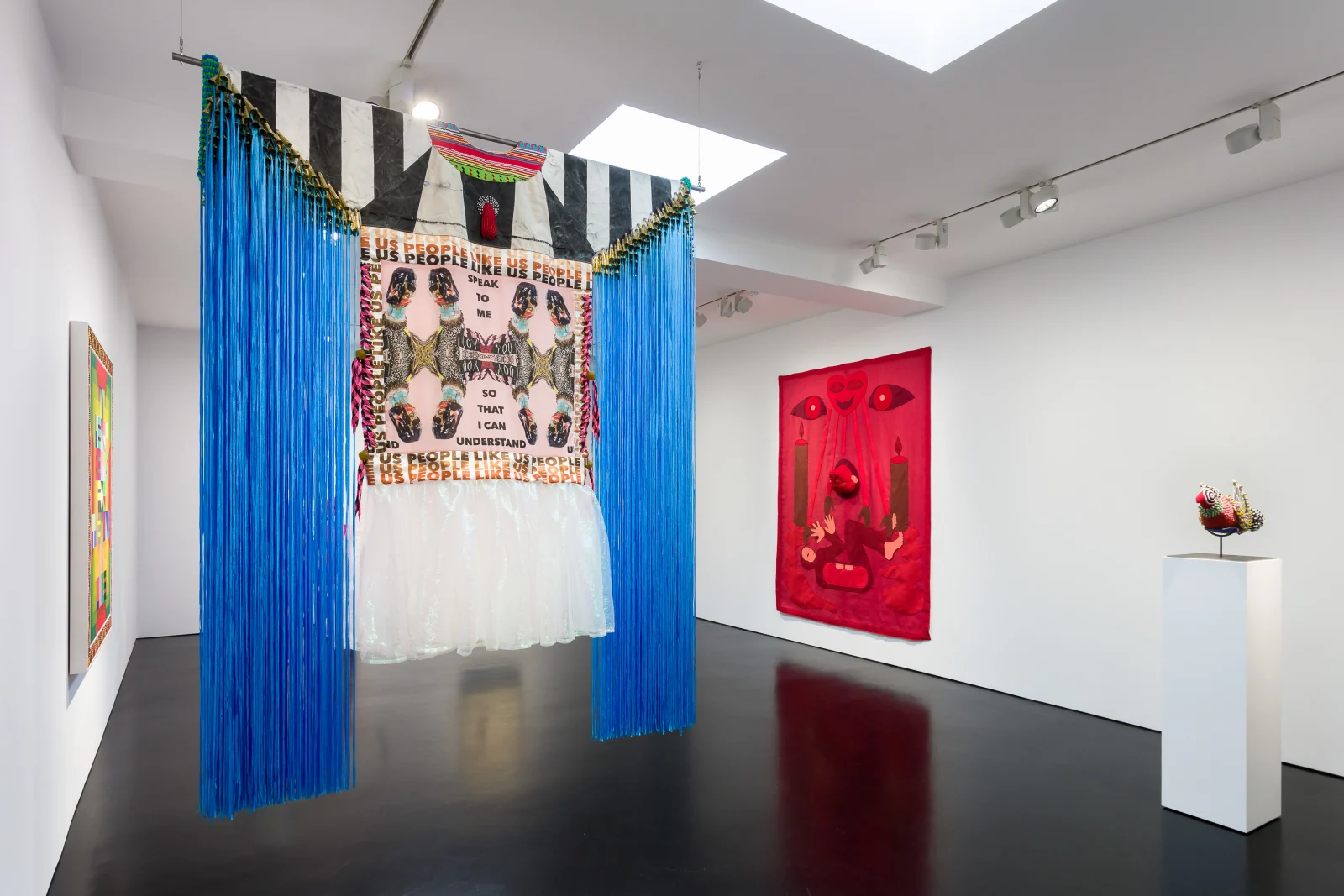

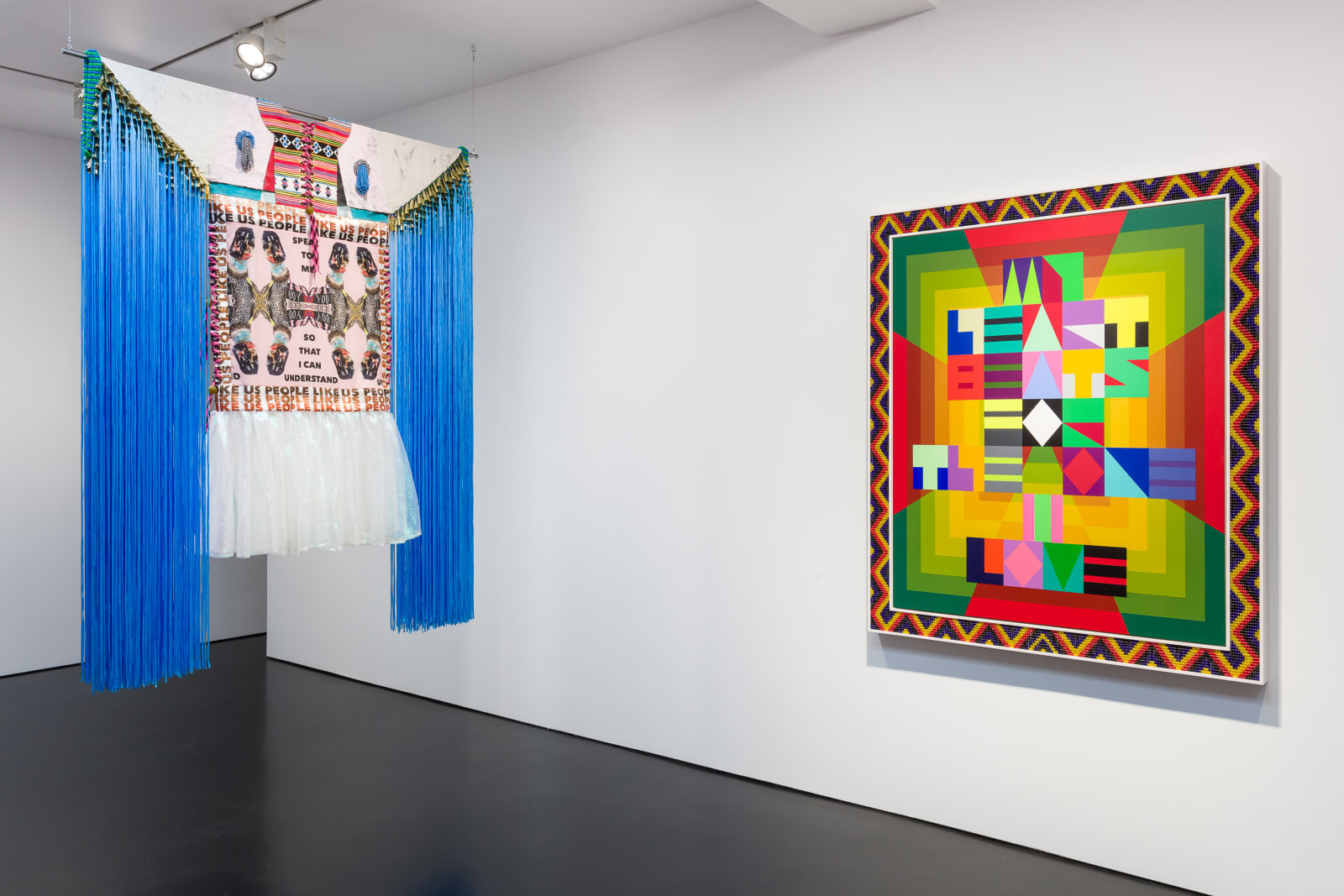

Jeffrey Gibson
Drawing on his Choctaw-Cherokee heritage, Jeffrey Gibson’s work engages Native American materials and process in relation to popular culture. His work in ‘Threadbare’ combines intricate indigenous artisanal handcraft – applied in wearable garments, beadwork and patterned quilts – with narratives of contemporary resistance in protest slogans and song lyrics. This “blend of confrontation and pageantry” is reinforced by what Felicia Feaster describes as a “sense of movement and performance as if these objects… are costumes waiting for a dancer to inhabit them.” Gibson harnesses the power of such materials and techniques to activate overlooked histories, while also embracing the presence of marginalized identities in today’s society. A hand-beaded bird constructed from recycled trainers has its wings outstretched as if mid-flight, representing a sense of optimism and hope for change.


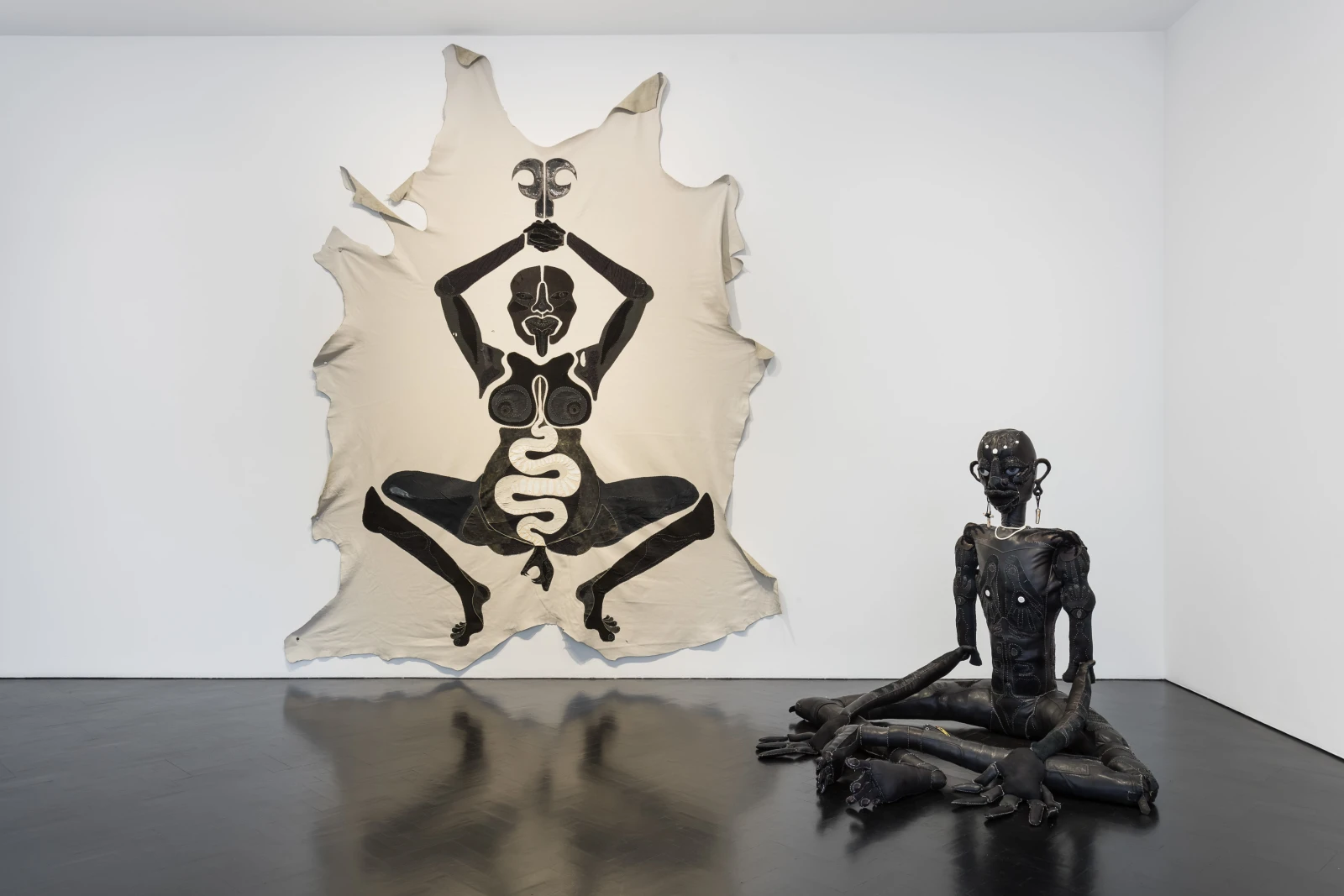

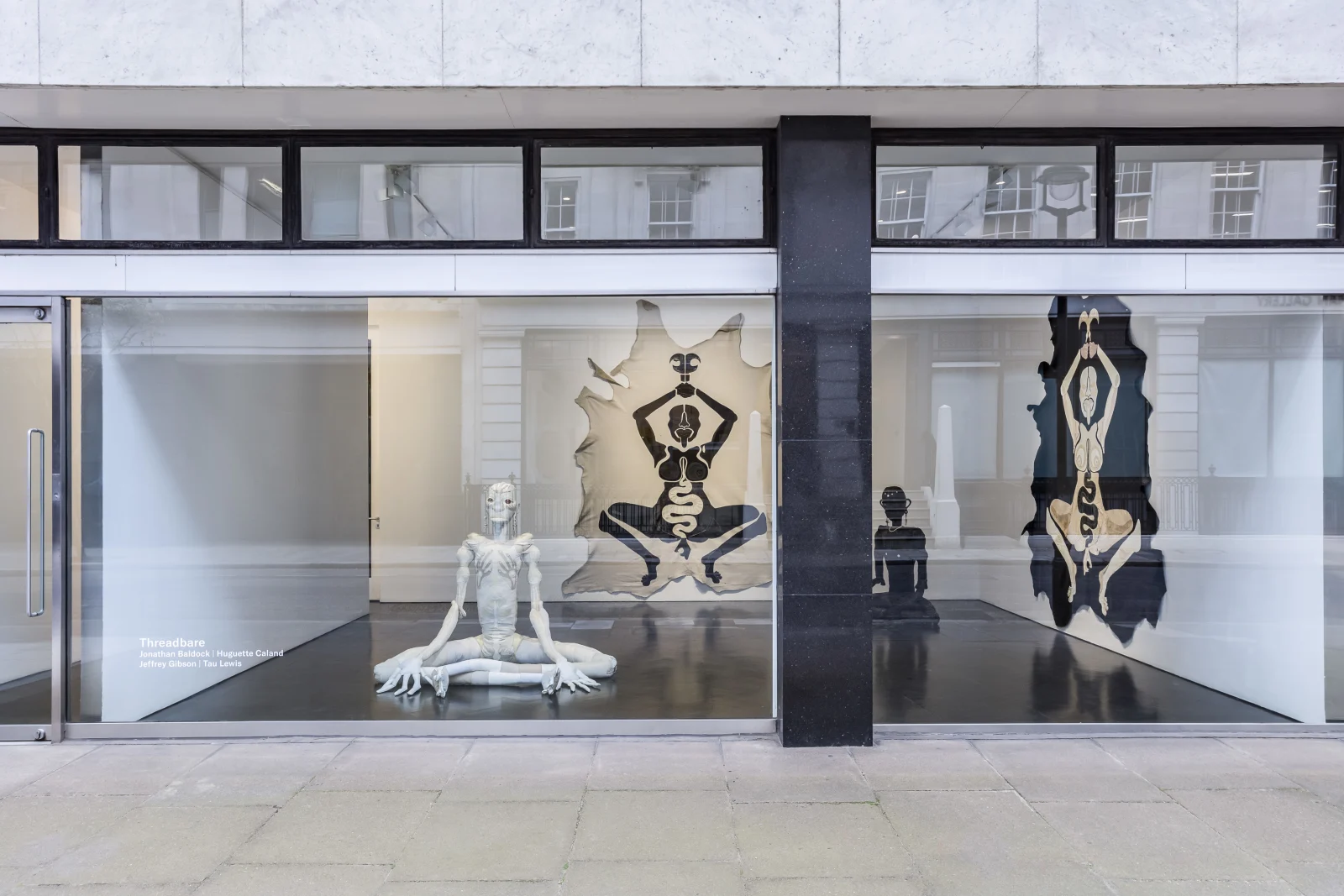

Tau Lewis
Tau Lewis sews, builds and assembles intricate sculptures and quilts that engage with personal and historical trauma. Using found materials such as recycled leather, the artist explores the transference of energy and emotion that occurs when an object is made by hand. Responding to the legacy of the Black diaspora, Lewis’ recent textile works – described by the artist as “celestial bodies” – act as spiritual conduits between the past, present and future. The transformative quality of Lewis’ work speaks to her interest in outsider artists from the Black South. She explains that “objects [which] come from the post-slavery era are made largely out of debris and refuse and garbage. I consider them fossils containing the emotional generational DNA of the entire community. I believe that by studying certain art objects and tendencies toward new thinking in the black community, you can learn a lot about mobility, pictorial memory, trauma and how to recover.”
